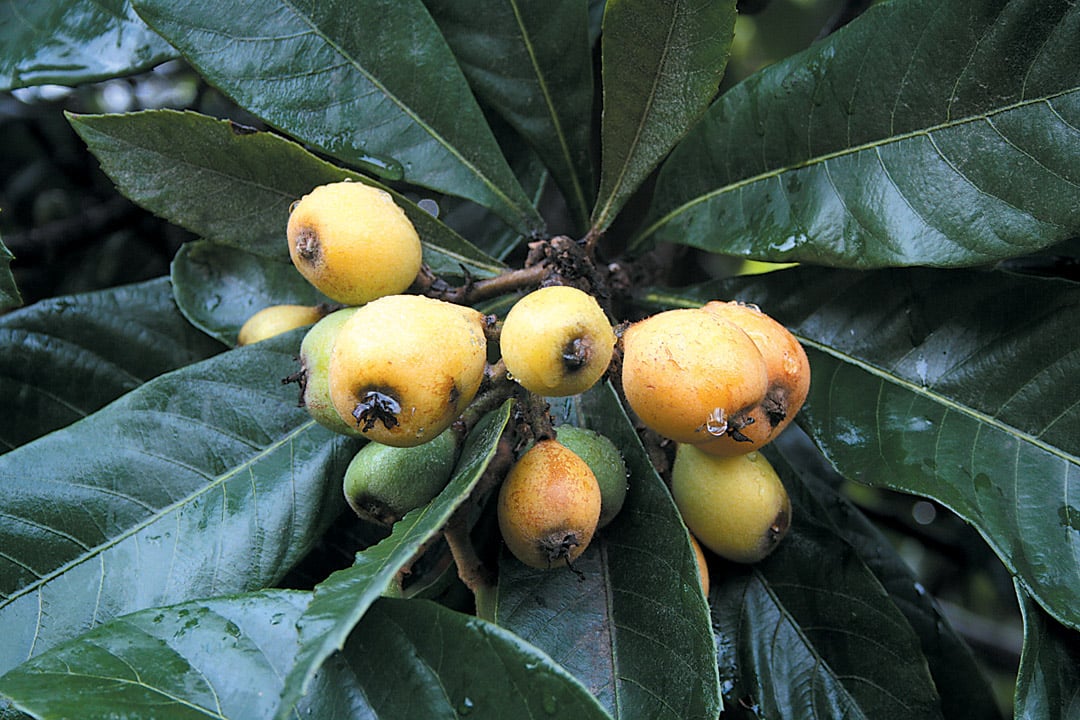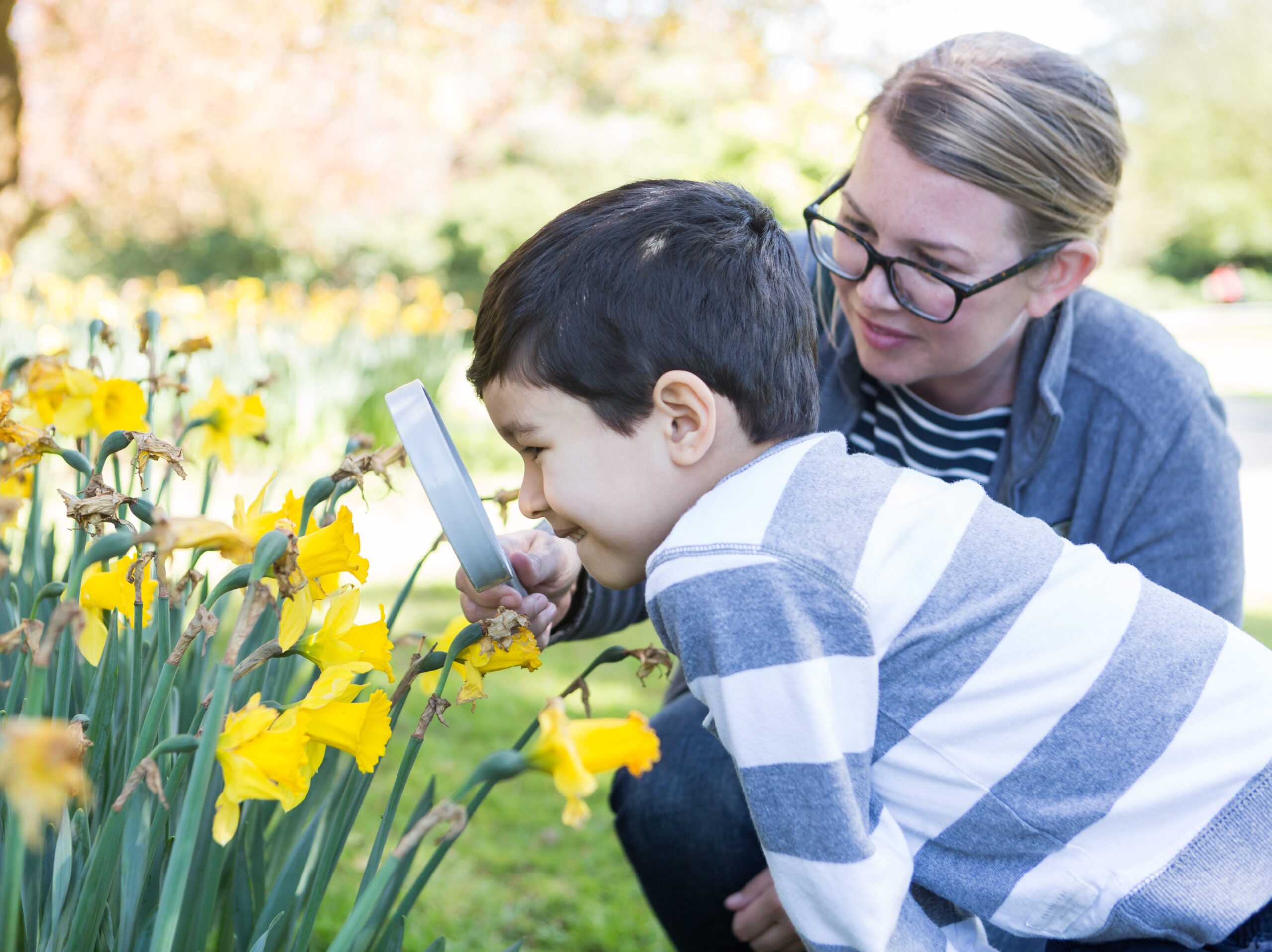

Contributor
- Topics: Archive

Originating in the Dadu River Valley of China‘s Sichuan Province, loquats (Eriobotrya japonica) have been cultivated in China for over two thousand years and in Japan for over a thousand years. Trade between China and the Philippines no doubt predates recorded history; the Philippines became a key component in the exportation of loquats, after the Spanish took control of the islands and Manila-based galleons began sailing an established trade route to the New World (1571-1815). The preferred route led from the Philippines to Acapulco, Mexico; stops in more northerly ports in California were less frequent, but the galleons traded with the missions and other outposts of civilization as they developed.
Europeans first became aware of loquats in Japan. Employed by the Dutch East India Company as medic and botanist, Engelbert Kaempfer described and named the loquat in 1690. He used Greek roots for the genus: erio for “wool” and botria for “bunch of grapes.” The trees were so well established in Japan that Kaempfer assumed they were native and assigned the specific epithet japonica. Swedish-born Carl Peter Thunberg was stationed in Japan as a surgeon in 1775 and made an effort to expand his knowledge of the country’s “native” plants. Because of his efforts, loquats were soon planted in Paris, France, and at Kew Gardens in England.
 In Northern and Central California, where the loquat had arrived courtesy of the Manila galleons, the tree was considered an exotic ornamental, offering a striking texture, fragrant flowers, and a size appropriate for residential gardens. Mission gardens, such as Santa Barbara, had loquats in the early 1800s. By the 1870s, loquats were common but all were seedlings with only mediocre fruit. The first selection of quality was introduced and marketed under the name ‘Giant’ in 1887.
In Northern and Central California, where the loquat had arrived courtesy of the Manila galleons, the tree was considered an exotic ornamental, offering a striking texture, fragrant flowers, and a size appropriate for residential gardens. Mission gardens, such as Santa Barbara, had loquats in the early 1800s. By the 1870s, loquats were common but all were seedlings with only mediocre fruit. The first selection of quality was introduced and marketed under the name ‘Giant’ in 1887.
In 1871, JC Wallace of Mississippi arrived in San Francisco, then headed to the southern part of the state to work as a foreman for Don Benito Wilson, a prominent civic leader, bringing loquats from San Francisco to his new job. Wallace was a nurseryman at heart; he soon had a nursery and built the first house within the city limits of Alhambra, California. He became well known as a nurseryman and promoted loquats regularly. The trees thrived in the warmer climate and generously produced the fuzzy fruit that had been so prized in Asia.
Loquat flower buds are covered with a rusty-hued fuzz and open with five creamy white petals, like other members of the rose family. Bees are the typical pollinators; one- to two-inch-long fruits develop in clusters and range in color from clear yellow to a deeper orange yellow. The flesh can be white, yellow, or orange, and the flavor is sweet to slightly acid. Each fruit has several seeds, usually three to five but sometimes up to ten.
Since its introduction, several selections have been made in two distinct classes. Fruits in the Chinese class are pear-shaped or spherical, with thick orange skin and many seeds. Those in the Japanese class tend to be longer and ovoid to pear-shaped, with a yellow skin, white juicy flesh, and fewer but larger seeds.
Ralph Cornell planted three loquat cultivars for the Bixbys at Rancho Los Cerritos. Two of them were introduced by CP Taft, who had settled in Orange, California in 1883. Taft chose to focus on loquats, starting with seedlings and growing them on to fruiting stage; he then introduced the best selections, chosen for both flavor and productivity.
‘Advance’ was one of Taft’s earliest selections, picked out of a batch of fifty seedlings in 1897; it is in the Japanese group with large clusters of yellow fruit. In Fruits of Warm Climates, Julia Morton cited this cultivar as a natural dwarf, but nursery catalogs of the 1930s fail to make note of that feature; even today, nurseries call it a large tree. It is well adapted to coastal regions, appears to be resistant to pear blight, and serves as a good pollinator. ‘Advance’ is infrequently propagated in California today, although it remains popular in Florida.
Another Taft loquat was ‘Champagne’, considered to be his best introduction. This produces a larger tree and fruit; also in the Japanese group, it was introduced in 1908. The fruit color is variable, often a deep yellow skin marked by a gray bloom, with flavorful white, slightly astringent flesh. ‘Champagne’ has remained popular and is readily available today.
‘Thales’ is the only loquat representing the Chinese group at the Rancho, but its name is somewhat controversial. HH Berger had nurseries in Northern California and Japan; he had introduced the first named cultivar ‘Giant’. A Mr Thales purchased a loquat from Berger, and his son marketed it as ‘Thales’ by the 1880s. However, the names ‘Placentia Giant’ and ‘Gold Nugget’ have also been applied to this loquat. In 1920, Wilson Popenoe, an agricultural explorer for the government and one of Ralph Cornell’s best friends, pointed out that the cultivar ‘Tanaka’ from Japan was so close in description that it could be the same as ‘Thales’. Despite the confusion, this cultivar produces a juicier, oblong fruit with an apricot flavor and has fewer fruits to a cluster. It is self-fertile and a preferred pollinator to the other two loquats at the Rancho. For the Bixby orchard, Cornell called out ‘Thales’; today, nurseries call it ‘Gold Nugget’, and it is readily available.
The fruit and leaf of the loquat, and syrups derived from it, have long been used in folk medicine in Japan for both internal and external treatments. The fruit is rich in hydrocyanic glycosides, which some believe to have anticancer properties. Loquats are a delightful fruit for eating fresh off the tree or for canning, and may someday prove to be important in the pharmaceutical industry.
Share:
Social Media
Garden Futurist Podcast
Most Popular
Videos
Topics
Related Posts

Ground Up Science for Greener Cities with Garden Futurist Dr. Alessandro Ossola
Spring 2023 Listen to the Podcast here. Alessandro Ossola is a scientist who gets very excited about the challenge of climate change allowing for an

Readying Urban Forests for Climate Realities with Garden Futurist Dr. Greg McPherson
Winter 2023 Listen to the Podcast here. “Going from the mow and blow to a more horticulturally knowledgeable approach to maintaining the landscape. And that

January Showers Bring February flowers…
Fall 2022 It may not quite have the same ring to it as the old English proverb, but it has a lot more truth to

Welcome, Greywater, to the Garden
Summer 2022 Oh, summer: delightful warm air, tomatoes swelling on the vine, fragrant blooms on an evening stroll. When it’s warm and rainless, how is









Responses